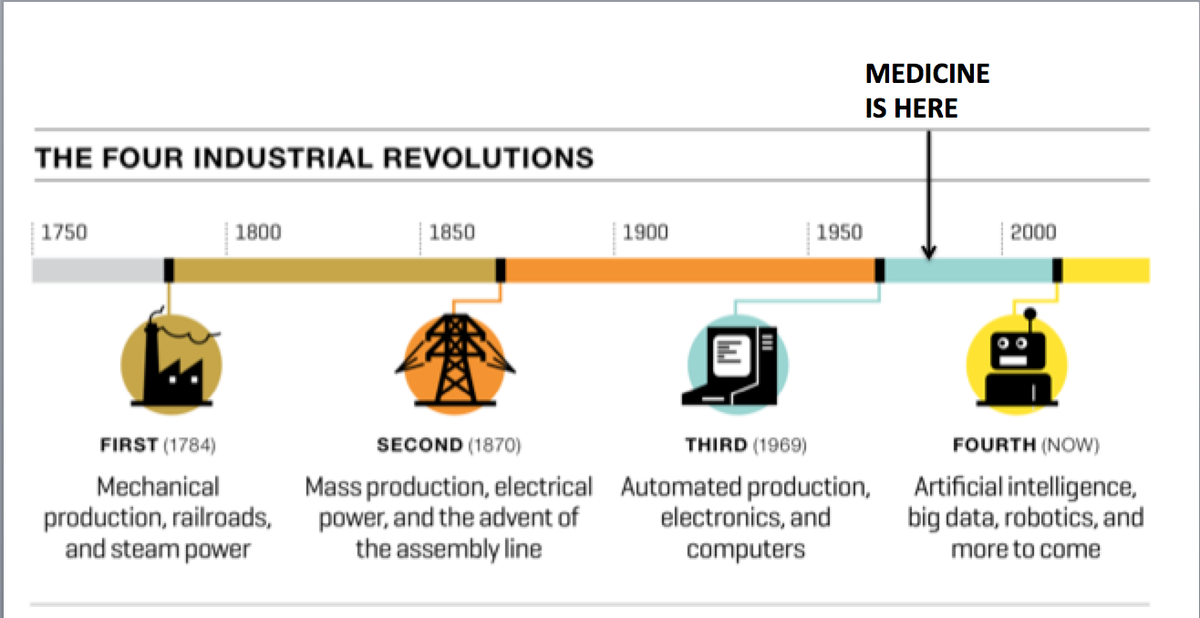Book Progress
Part I: Philosophy & History
Part II: Psychology & Sociology
Part III: Technology & Society
Part IV: AI & The Future
Part V: Cybersecurity & Defense
Part VI: Practical Application

Historical Transitions
The Echoes of History
Guiding Questions
- How do current digital transformations compare to previous technological revolutions in human history?
- What patterns can we identify in how societies adapt to and integrate new technologies?
- What can the agricultural and industrial revolutions teach us about navigating our current digital transition?
- How do technological transitions reshape not just what we do, but who we are as a species?
Learning from the Past
Throughout human history, major technological transitions have fundamentally reshaped not only how we live and work, but who we are as a species. The agricultural revolution transformed nomadic hunter-gatherers into settled farmers, creating the foundations for civilization as we know it. The industrial revolution mechanized production and urbanized society, giving birth to the modern world. Now, the digital revolution is once again transforming the fundamental nature of human existence.
Each of these transitions involved more than just new tools or techniques—they represented fundamental shifts in consciousness, social organization, and the very fabric of reality. The agricultural revolution introduced concepts of ownership, hierarchy, and time management that were foreign to hunter-gatherer societies. The industrial revolution created new forms of labor, capital, and social mobility while also generating unprecedented environmental and social challenges.
By examining these historical precedents, we can better understand the magnitude and implications of our current digital transformation. History doesn't repeat, but it often rhymes, and the patterns of past transitions can provide valuable insights for navigating our present moment of change.
Patterns of Transformation

1. The Agricultural Revolution: From Wandering to Settlement
The agricultural revolution, beginning around 10,000 BCE, represents one of the most profound transformations in human history. The shift from hunter-gatherer societies to agricultural communities wasn't just about new ways of producing food—it fundamentally altered human consciousness, social organization, and relationship with the natural world.
Agriculture introduced concepts that would become central to civilization: permanent settlement, surplus accumulation, social hierarchy, and long-term planning. It also created new forms of inequality and environmental impact that continue to shape our world today. The parallels to our digital transition are striking—both involve fundamental changes in how we organize information, create value, and relate to each other.
2. The Industrial Revolution: Mechanization and Modernity
The industrial revolution of the 18th and 19th centuries transformed agrarian societies into mechanized, urban civilizations. Steam power, factory production, and rail transportation didn't just change how goods were made—they created entirely new social structures, economic systems, and ways of experiencing time and space.
The industrial revolution also demonstrated the double-edged nature of technological progress. While it generated unprecedented prosperity and capability, it also created new forms of alienation, environmental degradation, and social disruption. The lessons from this period—about the importance of managing technological change consciously and equitably—are highly relevant to our current digital transformation.
3. Patterns of Adoption and Resistance
Historical analysis reveals consistent patterns in how societies respond to major technological transitions. Initial resistance and skepticism are common, followed by gradual adoption and eventual integration. However, this process is rarely smooth or equitable—different groups adopt new technologies at different rates and for different reasons.
Early adopters often gain significant advantages, while those who resist or lack access can be left behind. This creates new forms of inequality and social tension that persist long after the technology becomes mainstream. Understanding these patterns can help us anticipate and address similar dynamics in our current digital transition.
4. The Speed of Change: Acceleration Through History
One striking feature of technological transitions is their accelerating pace. The agricultural revolution unfolded over millennia, the industrial revolution over centuries, and the digital revolution over decades. This acceleration means that individuals and societies have less time to adapt and integrate new technologies before the next wave of change arrives.
This acceleration also means that the skills and knowledge that served previous generations may become obsolete more quickly. The challenge for contemporary society is developing adaptive capacity—the ability to continuously learn, unlearn, and relearn as technological and social conditions evolve.
Case Studies in Transformation
Wisdom from the Past for the Future
Historical analysis reveals that major technological transitions are never simply about technology—they are about the fundamental reorganization of human society, consciousness, and possibility. Each transition brings both tremendous opportunities and significant challenges, requiring societies to develop new forms of wisdom and institutional capacity.
The patterns from past transitions suggest several important insights for navigating our current digital transformation: the importance of ensuring equitable access to new technologies, the need for institutions that can help manage the pace and direction of change, and the value of maintaining continuity with human values and traditions even as external conditions evolve rapidly.
Perhaps most importantly, history teaches us that technological transitions are not inevitable or predetermined. While we cannot control the fact of change, we can influence its direction and character through conscious choice and collective action. The future is not something that happens to us but something we actively create through our responses to new possibilities and challenges.
Reader Reflection Questions
- 1. Which historical technological transition do you think provides the best analogy for our current digital transformation? What similarities and differences do you see?
- 2. How do you think future historians will characterize our current period of digital change? What will they identify as the most significant transformations and challenges?
- 3. What aspects of human life and society do you think should be preserved as we navigate ongoing technological change? What values and practices are worth maintaining regardless of technological evolution?
- 4. How can we learn from past mistakes in managing technological transitions to create more equitable and sustainable outcomes in our digital future?
Continue Your Journey
Transition to individual psychology or review historical patterns.